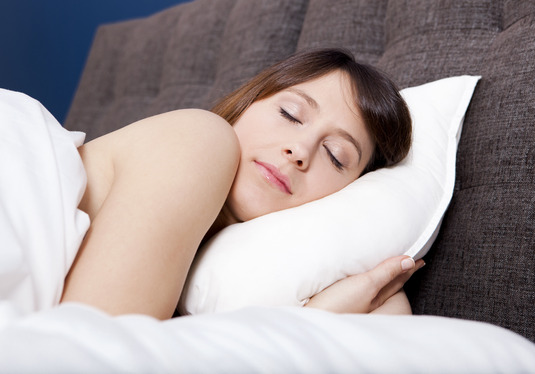For those of us who suffer from allergies, bedtime can be a dreaded event. Non-allergy bedding is fairly widely produced these days but exactly why is it needed and what are the pluses of buying it? If you find yourself consistently waking up with itchy eyes, a running nose and a congested throat, it might be that allergens are to blame. In this article, we’ll examine some of the causes of – and solutions to – this problem. We’ll also tackle some persistent myths, in order to manage your expectations of just what can be done.
The problem of mites
When it comes to your bed, such allergens are overwhelmingly the fault of mites. Mites are microscopic arachnids which thrive in places where warmth, food and water are plentiful. Suffice to say, your bed is just such a place, since it provides warmth, moisture and food in the form of your dead skin cells – which mites naturally find to be absolutely delicious.
You might think of your bed as a sort of hotel for mites, with an all-you-can-eat buffet served day and night. This, suffice to say, is an offer which no mite could refuse. And it’s not just a short stay, either – a mite can live for around three months and a female mite can lay around thirty eggs a week. This can cause the average bed to quickly swell in population. Some beds can end up providing a home to more than ten million mites!
But how exactly do mites cause an allergic reaction? Well, we’re afraid this is where things get a little bit revolting: It’s not the mites themselves which cause an allergic reaction, but the particles of waste which they produce. Yes, we’re talking about faecal matter, which, over the course of a night’s sleep, will be inhaled by the bed’s human occupant.
Inhale these in sufficient quantities and your body will respond by producing antibodies whose role is to attach to harmful bodies (like bacteria and viruses) and kill them. In doing this, these antibodies can cause the allergic symptoms which cause us such discomfort. These symptoms might include the aforementioned itchy eyes, running nose and congested throat, but they can also include a dry cough, wheezing and dermatitis (rashes). These symptoms may be mild – but irritating enough to deprive you of your beauty sleep!
It’s also worth noting that dust mites do not bite humans; if you find yourself covered in bites every morning, then a different culprit is to blame.
What can be done?
If you find yourself in this disagreeable position, then don’t despair. Help is at hand in the form of hypoallergenic covers. These work by controlling the mite population and thus reducing the potential amount of allergens present in the bed. They do this by reducing the amount of food available for the mites to eat. If the available food is limited, then the mite population will stabilise at a much lower level and the chance of an allergic reaction occurring will therefore be hugely diminished.
Hypoallergenic covers form a barrier between the person sleeping in the bed and the mites and thereby prevent dead skin cells from reaching them. These sheets will completely encase the mites inside the mattress and prevent new ones from getting in. After installing the sheet, you need only wait for the mites to starve to death and then your problem will be solved.
Are there any downsides?
When they were first introduced hypoallergenic bed covers had a number of teething problems. They were made from sheet plastic and as a consequence were noisy, warm and generally uncomfortable. This led many allergy-sufferers to despair and return to their usual bedding – since the allergic symptoms were preferable to the squeaky noise. Fortunately, these problems have largely been eliminated – modern hypoallergenic sheets are made from woven fabric and provide a comfortable, mite-free night’s sleep.
The problem with the ordinary bedsheet is that it is covered in holes, which allergens can easily slip through. A hypoallergenic cover, by contrast, is woven much more tightly. Dust mites and other allergen-producing microbes will be unable to pass through the sheet. These holes need to be extremely small in order to effectively stop allergens – a mite can be around three-hundred microns wide, while the allergen itself can be as small as ten. To give you a sense of scale, that’s around the size of a grain of salt. For this reason, most hypoallergenic covers have a pore size of ten microns or less. Broadly speaking, smaller pore sizes more effectively reduce the spread of mites.
It’s worth noting a simple way of doing this – regular cleaning. By washing your sheets more regularly, the amount of dead skin cells present will be hugely reduced and so too will the mite population. Once you have invested in non-allergy bedding, wash it regularly and keep your bed as snug and inviting as your can.




